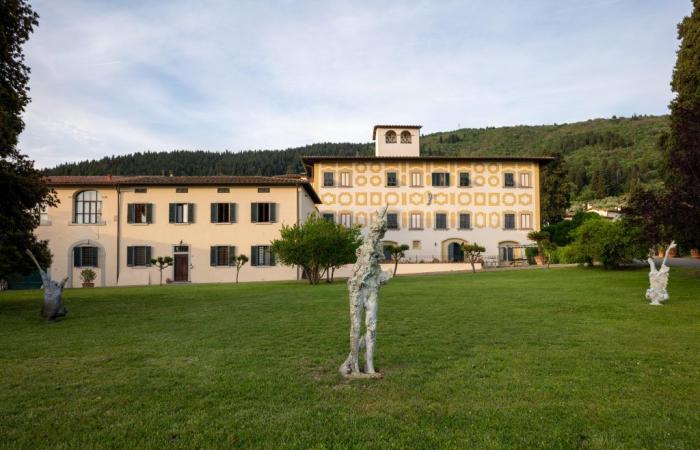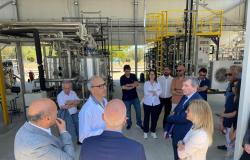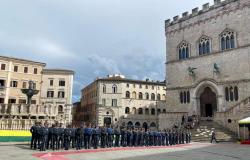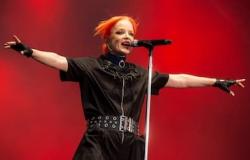What would the human be without its tendency to dominate the rest of reality? Last May, the ME Vannucci gallery in Pistoia and Villa Rospigliosi in Prato – exhibition venue of the ChorAsis association – tried to respond by opening to the public two exhibitions curated by Marina Dacci and think of it as a single, large project: Renaissanceopen until July 28, e ad naturem, until June 23rd. The gallery hosts the works of Bertozzi & Casoni, Elena Bellantoni, Chiara Bettazzi, Bianco-Valente, Serena Fineschi, Cristina Gozzini, Silvia Listorti, Nazzarena Poli Maramotti and Antonio Fiorentino, while the Prato villa chose the latter to create a site-specific focus. The nine artists on display investigate the individual in his possibility of uniting – and no longer distinguishing himself – from the other with respect to the self, generating new connections.
At a certain point in civilization, we began to think of ourselves as having a privileged position in the ecosystem. What followed was a growing hierarchization, based on the inexhaustible praise of the difference between our species and the inanimate, vegetal and animal kingdom, as well as with respect to this or that part of humanity. The pinnacle of pride of this separation coincides, in the common imagination, with a cliché: man at the center of the Universe in the humanistic-Renaissance idea.
And here we are centuries later, in the same Tuscany that welcomed the birth of this thought, dealing not only with its disenchantment, but also with the hypothetical end of the Anthropocene. Where to start again then, if not from the relationship we have with objects, with nature and with others? The nine artists who compose it tell it well Renaissancea collective exhibition hosted in the ME Vannucci gallery in Pistoia.
Although the works were not created for the occasion, it is surprising how it was possible to conceptually sew them together: a symptom, if nothing else, of a strong “karst” bond between the different languages and of a shared desire to union with the whole, be it sought in analogy, contact, fusion or disappearance. Among bones, ceramics, peels, dishes and small animals, we immediately move from the still lives of Chiara Bettazzi to those of Bertozzi & Casoni: while the photographs of the former question the mysterious stories behind the objects, the sculptural compositions of the latter alternate reality and fiction , the joke and the memento mori. In both, decay – stripped of drama – is transformed into a sort of renaissance from “below”, a reunion between things.
Cristina Gozzini’s works also intercept the similarities between natural elements and man, as happens in Flower-Skull, where the print of a mushroom resembles the section of a brain. The human being returns part of the whole even in Illocation by Silvia Lisorti: cards that look like swarms or nebulae are actually frottage of some parts of the body. The individual is a whole and is part of a whole, and in addition to his nervous connections he lives thanks to the relational ones with otherness, as can be read in the photographs of Elena Bellantoni and Bianco-Valente. The latter are also authors of the video Resonant Entity – which shows an attempt to write on water – open to a further reflection: a profound cosmic reunion can occur thanks to the disappearance of the forms we know.
And this is true both for the vellum cartographies of Serena Fineschi and for the ghostly presences in the Nazzarena Poli Maramotti paintings and sculptures, but above all it is true for the works of Antonio Fiorentino. If his intervention in the collective exhibition lies in the two Telamons that open the exhibition space, his reflection is much broader in the solo show at Villa Rospigliosi in Prato, ad nature.
Here, the artist’s research – which already revolved around the mix between anthropomorphic forms and natural materials – is measured in an open environment that is anything but white cube. The first three sculptures emerge from the large entrance lawn, echoing the olive grove in front: the works seem to writhe between the earth and the sky, and one is not sure whether they more resemble human figures or limestone shrubs. Their organic composition, however, is undoubted: up close you can see bone fragments, lumps of salt, sand and pieces of bark. The disintegration of anthropomorphism then continues in the internal spaces: in the cyanotypes and in the succession of masks the artist’s presence oscillates between evanescence and absence, proceeding increasingly towards identification with the animal and plant world.
Thus we arrive, once again, at the individual who strips himself of his features and accepts decay, as long as he rediscovers an ancient stage of cohesion with creation. All the works in both exhibitions seem to agree: the “new birth” is only possible by overcoming the idea of human specificity. Only once the obsession with the self is abandoned and otherness is embraced, the impulse towards a new and circular communion with everything can become more than the mere rhetorical narration of him.






